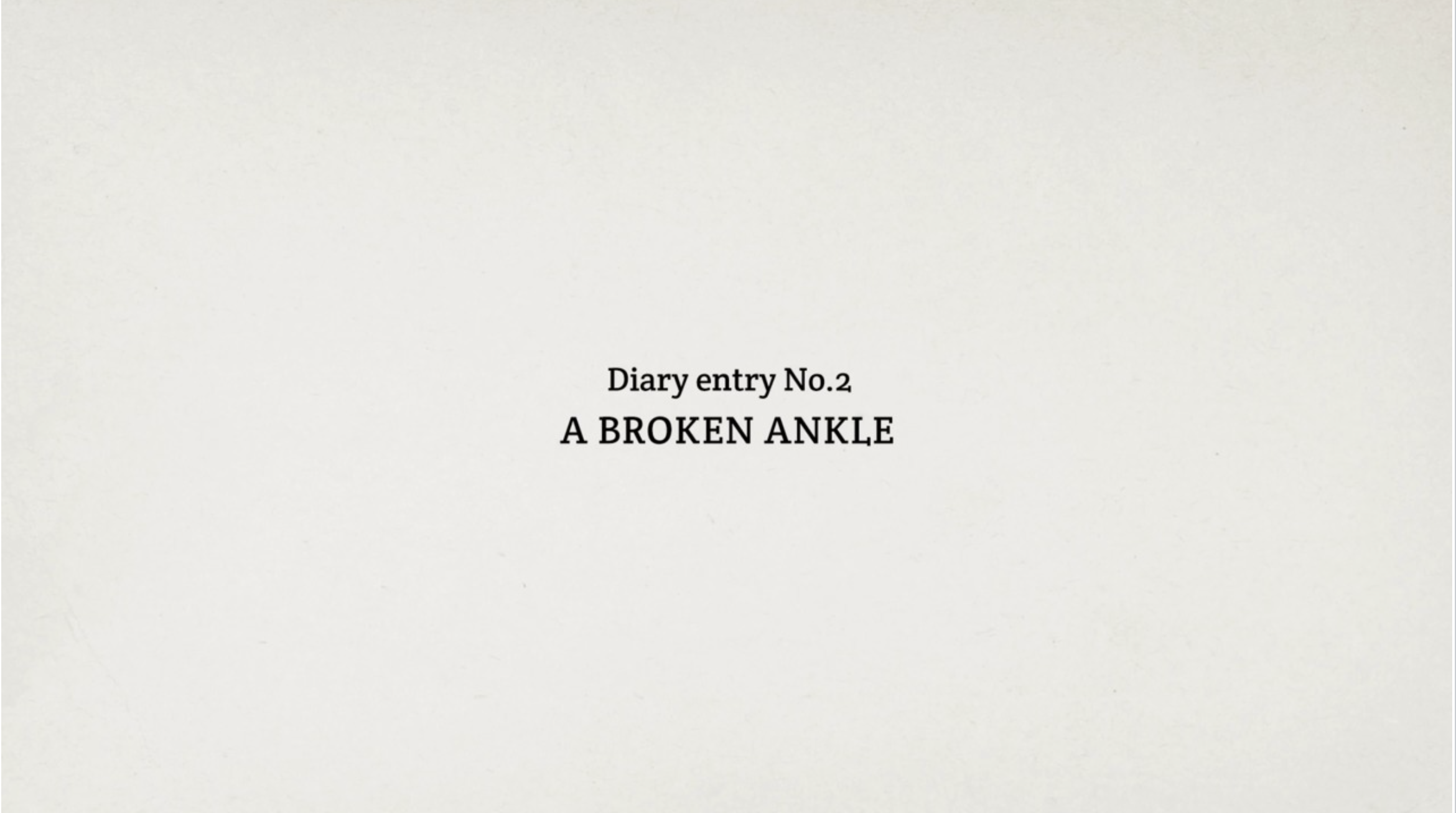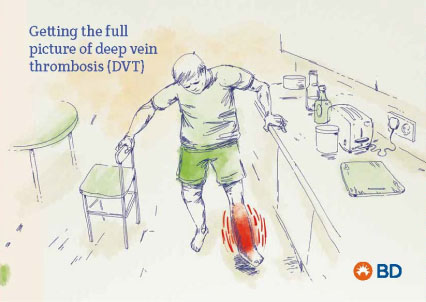-

What starts out as DVT in a passenger’s leg, develops into a dangerous pulmonary embolism.
Play Video
-

An ankle injury and a lack of movement during the subsequent recovery period results in DVT.
Play Video
-

A blood clot forms after surgery on a tennis injury and rapid DVT treatment is required.
Play Video
It all starts with your blood
Blood has an important job: it must flow continuously and smoothly throughout your body for an entire lifetime. One of the key functions of blood is the process of clotting.
Blood clots are potentially lifesaving when they stop you from bleeding after an injury. Too much clotting of blood can be dangerous as this can cause partial or complete blockage within a vein. This is what happens when you have a DVT.
Deep vein thrombosis (DVT) is a medical condition that occurs when a blood clot forms in a vein. These clots usually develop in the lower leg, thigh, or pelvis, but they can also occur in other parts of the body. When a DVT forms, it can often block the flow of blood through the vein.
If a DVT is left untreated, the clot can sometimes move or smaller lumps from it can break away and travel to the lungs through the network of blood vessels in our bodies.
A blood clot in the lungs is called a pulmonary embolism which may be shortened to the term ‘PE’. This requires urgent medical attention as it can cause serious life-threatening complications.
Together, DVT and PE are known as venous thromboembolism or VTE – a dangerous, potentially life-threatening medical condition.
Understand how to reduce your risk of developing a DVT
When it comes to blood clots, everyone has some degree of risk. However, it can help to know how you can reduce your risk by being aware of the following risk factors for DVT:
In people who have multiple risk factors, the risk of developing DVT is increased even further.
How to recognise a blood clot-related event like a DVT or a PE
In addition to knowing your risk factors, it is also important to be aware of the symptoms of blood clots, which can vary depending on the location of the clot.
People experiencing DVT symptoms often complain of a sudden or gradual pain, swelling, skin redness/ skin colour changes, tenderness, or warmth in the corresponding leg to where the blood clot has formed. The pain can sometimes become quite severe and debilitating at times.
Symptoms for this may include a sharp pain in the chest, a fast or irregular heartbeat, shortness of breath, excessive sweating, feeling feverish or coughing up blood.
Getting help quickly can reduce the complications for a DVT and PE, so learn to recognise the warning signs.
How are DVT and PE treated?
Blood clots are treated differently depending on the location and size of the clot as well as your overall health.
The main goal of treatment is to remove or stop existing clots from getting bigger and to prevent more clots from forming in the future.
Only through early diagnosis and treatment can further complications be avoided. These are some of the common treatment options your doctor may discuss with you:
There are a variety of medications which can be prescribed for DVT, including the following two most common types:
Anticoagulants
Medicine that prevents clots from forming. You may have heard of Warfarin, which is the name of an anticoagulant medication.
Thrombolytics
Medicine that dissolves blood clots.
Sometimes having surgery or a small procedure is the best option, for example if a blood clot is difficult to treat with conventional medicines or if you are unable to take the necessary medications. Some of these options are outlined below:
Mechanical thrombectomy
The surgical removal of a clot. This may be used in the urgent treatment for a clot and can be used if a patient cannot take medication to prevent their blood from clotting, for example after a car accident, a stroke or other surgery.
Catheter-directed thrombolysis
This procedure involves a long tube (a catheter) being inserted into a vein, in the direction of the blood clot where it then can be used to deliver clot-dissolving medication called thrombolytics.
Angioplasty
A nonsurgical treatment for DVT that is used to widen the vein after the blood clot has been dissolved.
Venous stents
Metal scaffolds are inserted in an interventional procedure. This stent expands against blocked or narrowed vein walls to provide support to the vein affected by clots. This helps keep the vein open allowing blood to flow, restoring normal circulation to the leg.
Inferior vena cava (IVC) filters
A special filter which is inserted into a blood vessel in your body, called the Inferior vena cava, that can prevent blood clots from moving from the vein in your leg to the lungs.
Compression socks
Sometimes also called compression stockings. These apply pressure to your lower legs, helping to maintain blood flow and reduce discomfort and swelling.
It is important to know that you are not alone when encountering difficulties managing the symptoms of DVT.
A doctor specialising in treating medical conditions related to blood vessels, known as a venous specialist, is often best placed to treat VTE and other related health complications. Your doctor may refer you to a venous specialist for a more tailored treatment option.
Resources
This brochure is intended as a resource to help you better understand what DVT is, how to recognise the symptoms, the common causes and risk factors of a DVT, potentially dangerous complications and the various treatments options for DVT.
